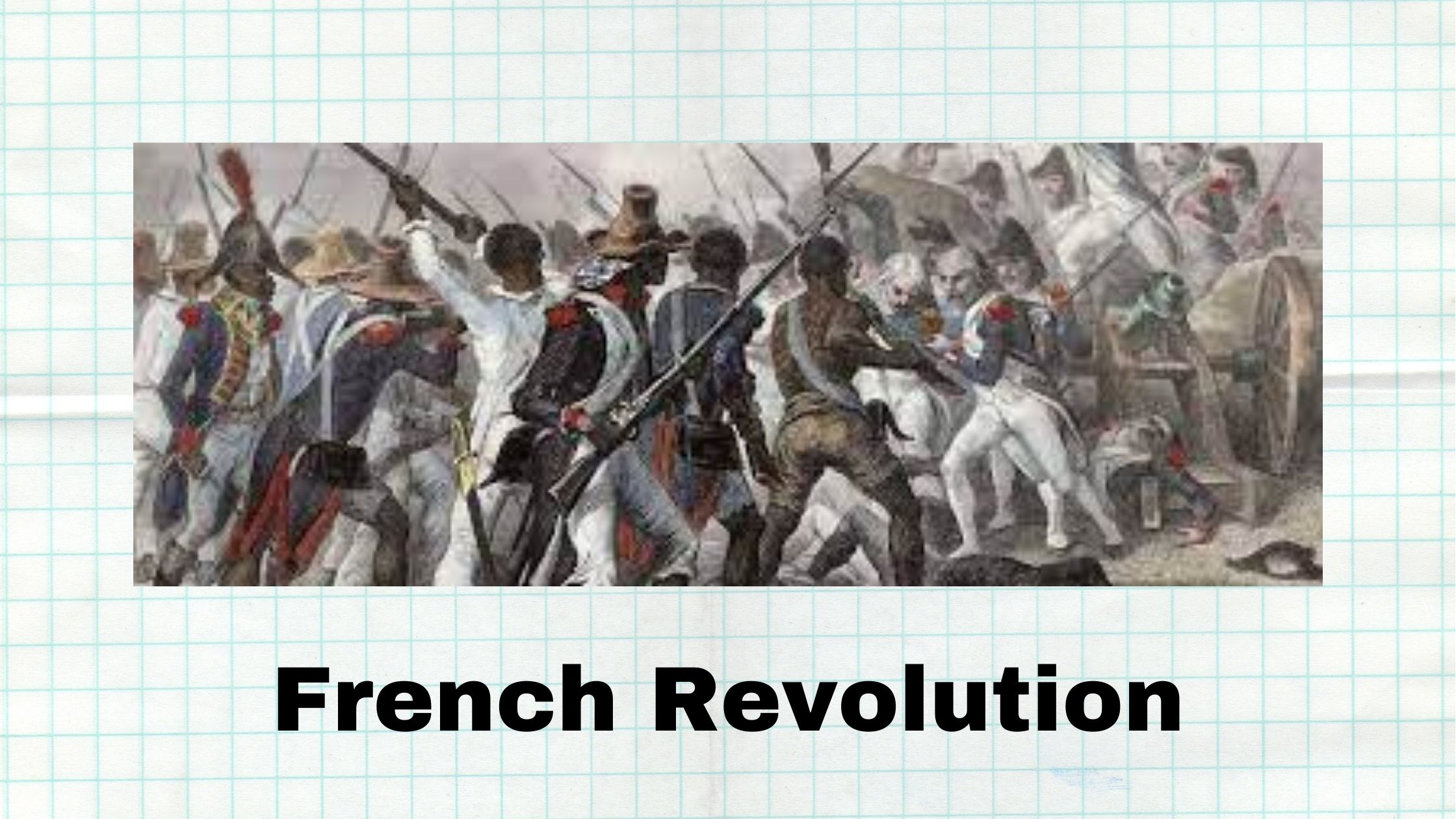
Sometimes it’s not just one incident that alters the world, but an entire chain of events. The French Revolution, which spanned from 1789 until 1804, was a critical series of events. The Revolution had far-reaching consequences, including modern politics and European global power relations. This single event altered the course of history.
Period of the French Revolution
The French Revolution was a period of profound political and social transformation that began in 1789. Its concepts were seen as vital to liberal democracy. They were also influenced by movements in other nations. The reasons of societal unrest were frequently political and economic issues. The Estates-General were abolished and replaced with a National Assembly in May 1789.
The next three years were dominated by societal turmoil and a fight for governmental power. The French Revolutionary Wars, which began in April 1792, resulted in the foundation of the French Republic.
The Reign of Terror was an attempt to remove people suspected of being anti-revolutionary. Over 18,000 individuals were put to death in Paris and other provinces by the time it ended in July 1792. In November 1795, the French Directory assumed command.
Social Inequality
The inability of the Ancient Republic to manage social inequality and properly fund government debt is often seen as the core reasons of the French Revolution. The combination of these circumstances resulted in the country’s economic slump and high food costs. The Ancient Republic’s incapacity to control social inequality and adequately fund government debt is widely regarded as one of the primary causes of the French Revolution. This confluence of events resulted in the country’s economic downturn and skyrocketing food prices.
The concept of transnational elites sharing ideas and styles was not new; what had changed was the scope and quantity of people engaged. The Court of Versailles was the epicentre of culture, fashion, and political power under Louis XIV. Over the course of the 18th century, advances in education and literacy resulted in bigger audiences for newspapers and journals, with Masonic lodges, coffee shops, and reading clubs offering spaces for individuals to debate and discuss ideas. As a result of the rise of the so-called “public sphere,” Paris displaced Versailles as the cultural and intellectual capital, leaving the Court isolated and powerless to influence popular opinion.
In addition to these social changes, the French population increased from 18 million in 1700 to 26 million in 1789, making it Europe’s most populated state; Paris had over 600,000 residents, nearly one-third of whom were either jobless or had no regular occupation. Domestic farmers struggled to cultivate enough food to sustain large populations due to inefficient farming practises, and rudimentary transportation networks made it difficult to maintain supplies even when there was enough. This meant that between 1770 and 1790, food costs climbed by 65 percent while salaries increased by just 22 percent. Such shortages harmed the regime since many attributed price rises on the government’s failure to curb profiteering.
By the spring of 1789, a bad crop followed by a harsh winter had left the rural farmers with nothing to sell and the urban proletariat with little purchasing power.
Fiscal Problems
During the 18th century, the French state had a succession of fiscal problems, largely due to structural flaws rather than a shortage of resources. In contrast to the United Kingdom, where Parliament controls both spending and taxation, the Crown in France controls just spending. National taxes could only be sanctioned by the Estates-General, which had not met since 1614; provincial parliaments, the most important of which was the Parliament de Paris, had taken over revenue tasks.
Although ready to authorise one-time taxes, these organisations were hesitant to approve long-term measures, and collection was delegated to private people. This drastically decreased the yield from those that were authorised, and as a result, France failed to service its debt despite being larger and wealthier than Britain. Following a partial default in 1770, Turgot, the Finance Minister, initiated reforms that, by 1776, had balanced the budget and lowered government borrowing costs from 12% per year to less than 6%. Despite his achievements, he was fired in May 1776 after claiming that France could not afford to intervene in North America.
The Estates-General were split into three sections: the clergy, the nobles, and the “commons.” Despite comprising fewer than 5% of the population and being virtually tax-free, the First and Second Estates were able to outvote the Third Estate.
Role of Election
In the 1789 elections, the First Estate returned 303 deputies, representing 100,000 Catholic clergy; over 10% of French properties were owned directly by individual bishops and monasteries, in addition to tithes paid by peasants. More than two-thirds of the clergy lived on less than 500 livres a year and were often closer to the urban and rural poor than those elected to the Third Estate, whose voting was confined to male French taxpayers aged 25 and up. As a result, half of the 610 deputies elected to the Third Estate in 1789 were attorneys or municipal authorities, roughly a third were merchants, and fifty-one were wealthy landowners.
The Second Estate chose 291 representatives to represent about 400,000 men and women who held roughly 25% of the land and collected seigneurial dues and rents from their tenants. The noblesse d’épée, or traditional nobility, and the noblesse de robe, or robed aristocracy, were split into two groups, similar to the clergy. The latter were hard-working professionals who dominated regional parliaments and were generally socially conservative. They earned their stature through judicial or administrative positions.
The Estates-General met at the Menus-Plaisirs du Roi near the Palace of Versailles on 5 May 1789, rather than in Paris; the choice of site was viewed as an attempt to suppress their arguments. Each Estate gathered in separate chambers, as was traditional, with furnishings and opening rituals that emphasised the supremacy of the First and Second Estates. They also insisted on upholding the restriction that only individuals who owned property may sit as representatives for the Second Estate, thereby excluding the very popular Comte de Mirabeau.
Because different assemblies made it possible for the Third Estate to be outvoted by the other two, Sieyès attempted to unite them altogether. Instead of each Estate confirming its own members, he required that all deputies be authorised by the Estates-General as a group. Deputies would have to continue to sit as one body because their legitimacy was derived from the Estates-General. After a protracted standoff, the Third Estate decided to authenticate its own deputies on 10 June, a procedure that was completed on 17 June; two days later, they were joined by over 100 members of the First Estate and declared themselves the National Assembly.
The remaining representatives from the other two Estates were invited to participate, but the Assembly said unequivocally that it would legislate with or without them.
Rights of Man and Citizen
Lafayette, with the help of Thomas Jefferson, drafted the Declaration of the Rights of Man and Citizen, a model constitution that reflected some of the Declaration of Independence’s principles. However, there was no agreement in France on the function of the monarchy, and it was impossible to establish political institutions until this issue was resolved. When it was submitted to the parliamentary committee on July 11, pragmatists such as President of the Assembly Jean Joseph Mounier, who were concerned about establishing unrealistic expectations, rejected it.
On August 26, it was released as a declaration of principle after being edited by Mirabeau. It featured elements deemed radical in any European society, let alone 1789 France, and while historians continue to argue responsibility for its drafting, most believe the truth is a mix. Although Jefferson made important additions to Lafayette’s draught, he acknowledged an intellectual obligation to Montesquieu, and the final form was radically different. [54] According to French historian Georges Lefebvre, it “highlighted equality in a way that the (American Declaration of Independence) did not.”
The French Revolution has gotten a lot of press, both from the general public and from academics and historians, and opinions on its significance and significant events have often been divided along ideological lines. In general, Revolutionary War studies began with political concepts and advances and later turned to social history, which examines the Revolution’s influence on individuals.
Conclusion
It is also argued that the French suffered a profound shift in self-identity, as demonstrated by the loss of privileges and their replacement with inherent Human rights, as well as a fall in social respect that emphasized the concept of equality throughout the Revolution. The Revolution was the most major and spectacular challenge to political absolutism in history, spreading democratic ideas throughout Europe and, eventually, the world.
By: Sneha Tanawde
Write and Win: Participate in Creative writing Contest & International Essay Contest and win fabulous prizes.


